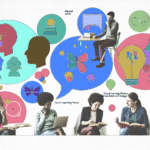
Introduction
In today’s ever-evolving educational landscape, the quest for effective teaching strategies has never been more critical. One initiative that has gained significant traction—and for a good reason—is Response to Intervention (RTI). This multi-tiered approach is designed to provide early, systematic assistance to students who are struggling. Through tailored interventions, educators can identify and address academic challenges before they become overwhelming barriers. What makes RTI especially compelling is its practical application—wherein real-life success stories shine through, illustrating just how transformative this model can be.
In this article, we delve into RTI in Action: Real-Life Success Stories from the Classroom, highlighting inspiring case studies that showcase its effectiveness. This comprehensive overview aims not only to inform but also to motivate educators and stakeholders to implement RTI strategies actively.
Understanding RTI: The Basics
What is RTI?
Response to Intervention (RTI) is a tiered approach to early identification and support for students with learning and behavior needs. Typically, it involves three levels (or tiers):
- Tier 1: Universal interventions that apply to all students.
- Tier 2: Targeted interventions for students needing additional support.
- Tier 3: Intensive interventions for students who continue to struggle.
The purpose is straightforward: to ensure all students receive the support they need to succeed academically.
The Importance of RTI in Education
The growing emphasis on data-driven decision-making in education underscores the importance of RTI. By using regular assessments to monitor student progress, educators can make timely adjustments to instructional strategies. This proactive approach not only benefits struggling learners but fosters an inclusive classroom environment where every student can thrive.
Case Studies: RTI in Action
Case Study 1: The Power of Early Intervention
Location: Lincoln Elementary School, Pennsylvania
Challenge: At Lincoln Elementary, the third-grade reading scores were alarmingly low, with a significant percentage of students performing below grade level.
Intervention: The school implemented RTI with a focus on early assessment. Teachers administered regular fluency and comprehension tests. Students not meeting benchmarks were immediately placed in Tier 2 intervention groups focusing on reading strategies.
Results: Within a semester, the percentage of third graders reading at or above grade level jumped from 60% to 80%. Teachers noted improved confidence and engagement among students.
Analysis: This case demonstrates the effectiveness of timely, data-driven interventions. The RTI framework facilitated targeted support, addressing individual needs that traditional classroom instruction might have overlooked.
Case Study 2: Math Mastery Through Collaboration
Location: Maple High School, California
Challenge: Many students at Maple High School were failing algebra, leading to significant gaps in math proficiency.
Intervention: The school adopted RTI by forming collaborative teams of general and special education teachers. They shared insights and strategies for addressing algebraic concepts. Students struggling in Tier 1 received additional support through Tier 2 math labs.
Results: The failure rate in algebra dropped by 30% over a year. Additionally, students exhibited greater enthusiasm for math, resulting in increased enrollment in advanced math courses.
Analysis: This case highlights the collaborative aspect of RTI, showing how teamwork can enhance instructional effectiveness. The synergy between teachers allowed for a more holistic support system for students.
Case Study 3: Addressing Behavioral Issues
Location: Green Valley Middle School, Texas
Challenge: Green Valley faced significant disciplinary issues that disrupted learning, impacting not just the students with behavior problems but their peers as well.
Intervention: The school applied RTI to behavioral concerns, identifying students who struggled with discipline and implementing Tier 1 universal behavioral supports. For those needing more, Tier 2 interventions included small group therapy.
Results: Behavioral referrals dropped by 40%, and teachers reported a noticeable improvement in classroom atmosphere. Students were more focused, leading to better academic outcomes.
Analysis: This example underscores RTI’s versatility, extending beyond academics into behavioral support. The school successfully created a more conducive learning environment, showcasing RTI’s holistic nature.
Case Study 4: Enrichment for Advanced Learners
Location: Riverbank Academy, Colorado
Challenge: Educators at Riverbank noticed that high-achieving students were feeling disengaged and unchallenged.
Intervention: Rather than only focusing on remediation, they embraced RTI to provide enrichment opportunities. Students excelling in Tier 1 were quickly moved to Tier 2 for advanced math and reading workshops.
Results: The engagement level soared, with 90% of participating students reporting increased interest in learning and higher scores in assessments.
Analysis: This case reveals RTI’s potential in enriching the learning experience, proving that it can cater to both struggling and advanced learners.
Charting the Impact of RTI
To better understand the transformative results of RTI, here’s a chart summarizing key outcomes from the aforementioned case studies:
| School | RTI Focus | Improvement Area | Before RTI (%) | After RTI (%) |
|---|---|---|---|---|
| Lincoln Elementary | Early Reading Assessment | Reading Proficiency | 60% | 80% |
| Maple High School | Math Collaboration | Algebra Passing Rate | 55% | 85% |
| Green Valley Middle | Behavioral Support | Behavioral Referrals | 100 (ave. per month) | 60 (ave. per month) |
| Riverbank Academy | Enrichment Opportunities | Student Engagement | 70% | 90% |
The Broader Implications of RTI in Action
Building a Culture of Support
Utilizing RTI creates a culture where continuous support becomes the norm in every classroom. Teachers collaborate to share strategies, and students know that assistance is readily available—even before they encounter difficulties.
Data-Driven Decisions
With RTI, decisions are researched and data-laden. Learning outcomes are not left to chance; instead, they are systematically tracked and analyzed, ensuring resources are allocated where they are most effective.
Inclusivity for All Learners
One of the core strengths of RTI is its ability to foster an inclusive climate. By providing tailored interventions, schools address the diverse needs of students, from those needing remediation to those requiring enrichment.
Family and Community Involvement
A successful RTI model goes beyond school walls, requiring the active involvement of families and the broader community. When parents understand the process, they can advocate for their children, further enhancing the effectiveness of interventions.
Conclusion: The Future of RTI in Action
As exemplified by these real-life success stories, RTI has proven itself to be an essential framework for elevating student achievement. By providing structured, tiered interventions, educators can meet the diverse needs of their students, ensuring no one is left behind. The compelling narratives of Lincoln Elementary, Maple High, Green Valley Middle, and Riverbank Academy illustrate the powerful, positive impact RTI can have—from academic success to improved behavioral outcomes.
For educators, administrators, and policymakers, the message is clear: implementing RTI is not just a good idea—it’s a necessity. The importance of fostering an inclusive, supportive learning environment cannot be overstated. As we look to the future, let us commit to taking RTI in Action: Real-Life Success Stories from the Classroom seriously, ensuring that every child has the opportunity to succeed.
FAQs About RTI
1. What is the primary goal of RTI?
The primary goal of RTI is to identify and support students who are struggling academically or behaviorally before they fall too far behind.
2. How do schools assess the effectiveness of RTI?
Schools assess RTI effectiveness by monitoring student progress at each tier, employing regular assessments, and analyzing data to inform instructional decisions.
3. How can teachers implement RTI strategies effectively?
Teachers can implement RTI strategies by regularly assessing student performance, collaborating with colleagues to develop interventions, and being flexible in adjusting their teaching methods based on student needs.
4. Is RTI only for students with learning disabilities?
No, RTI is designed for all students. It addresses academic and behavioral challenges across the spectrum of learning abilities, providing support for those who excel as well.
5. What role do parents play in the RTI process?
Parents are vital partners in the RTI process. Their understanding and involvement can reinforce interventions at home and ensure consistency in support for their children.
In sum, the journey through RTI in Action: Real-Life Success Stories from the Classroom not only sheds light on effective practices but also calls on all educational stakeholders to embrace this transformative approach. Let’s foster a future where every student has the opportunity to thrive!














